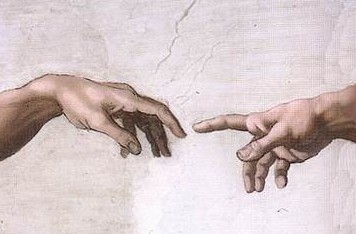
As promised, we switch gears. We go from paintings to sculptures...
This is Donatello's second David (c.1430) and is one of my personal favorites. It is considered by many to be Donatello's most celebrated work. I first learned about it in Cambridge, and was mesmerized by this bronze statue at the Museo Nazionale del Bargello in Florence. It also served as the topic for my final paper for that summer course. It broke tradition and cemented Donatello as a sculptor with a great sense of individuality. Donatello’s work influenced other great artists since his time, including arguably the greatest artist of all, Michelangelo.

This life-size nude figure was ground-breaking at its time. Unlike other Davids that were depicting strong heroism. This bronze adolescent figure is elegant, sensual, and saint-like, his hat is reminiscent of Mercury. His relaxed stance is a contraposto (S-shape) pose over the giant decapitated head of Goliath. The tilted head is never meant to be in full view. The ambiguous facial expression adds to the mystique that inspires endless reflection.

Much more can be discussed on this piece, including: the symbolism on Goliath's helmet, its influence on future statues, its differences with Donatello's first David (c.1408), etc. I shall just briefly comment on perhaps the most controversial topic for this piece - its obvious androgynous features. The purported androgyny brings out much eroticism. One assertion is that a feminine body suggests that the triumph over Goliath is not due to brute force. Rather, the accomplishment is due to graceful feminine-like qualities, or alternatively due to God’s will. Donatello’s own alleged homosexuality is another explanation for the statue's sexual ambiguity. This David seems to be totally consumed in deep thoughts. Is he overwhelmed by his spectacular victory? Or by his own physical beauty?
The Bargello - a former barrack and prison in Florence - is now a revered museum.

The courtyard inside...



























/images/festival-wired.jpg)